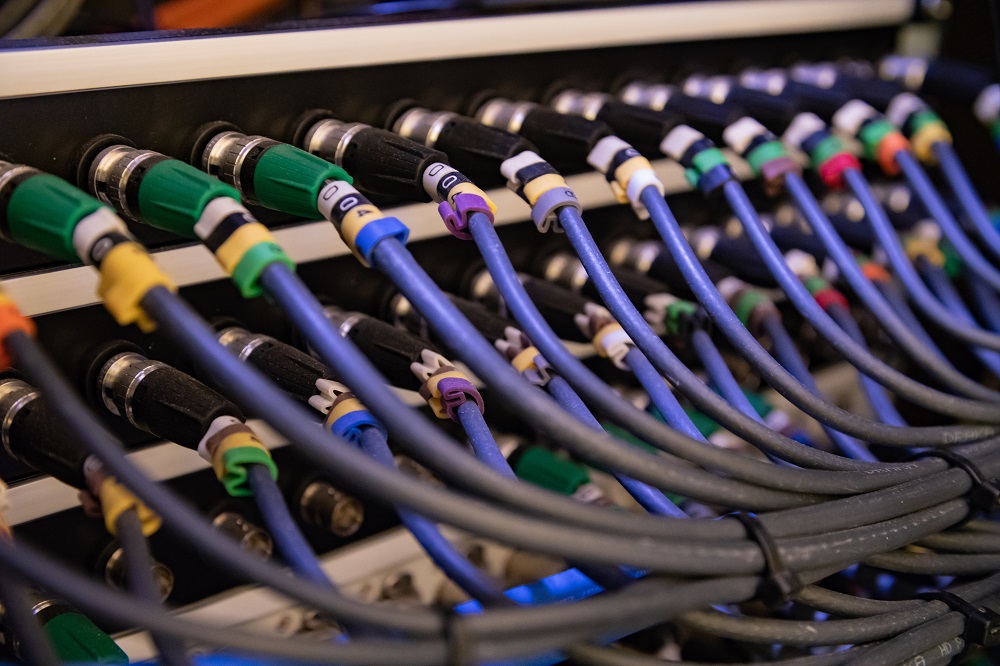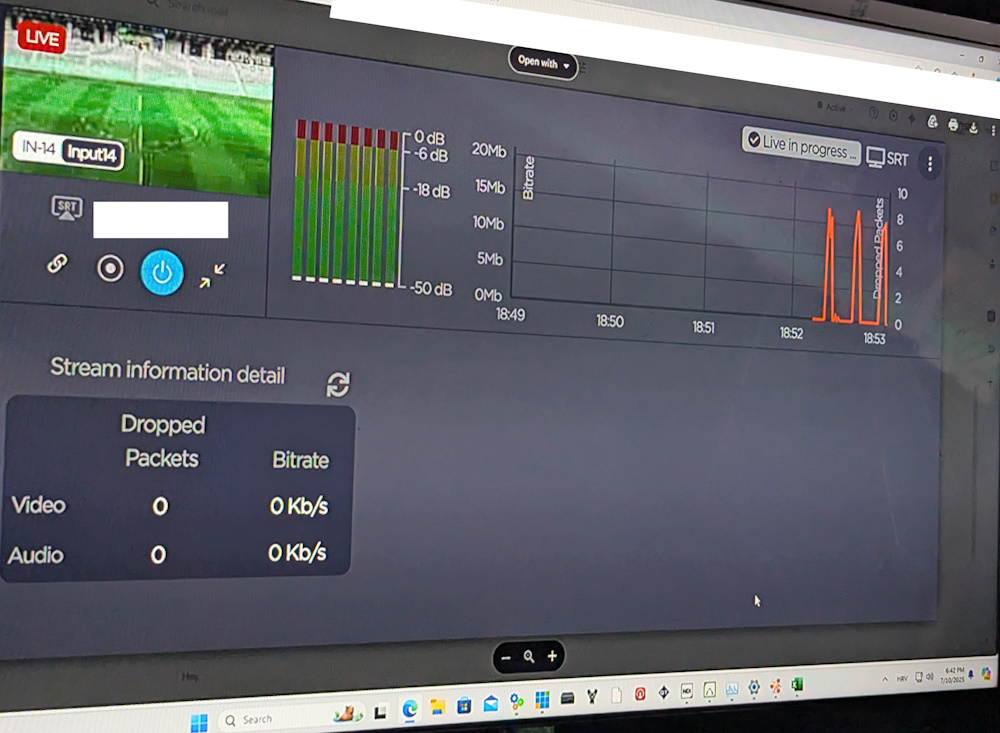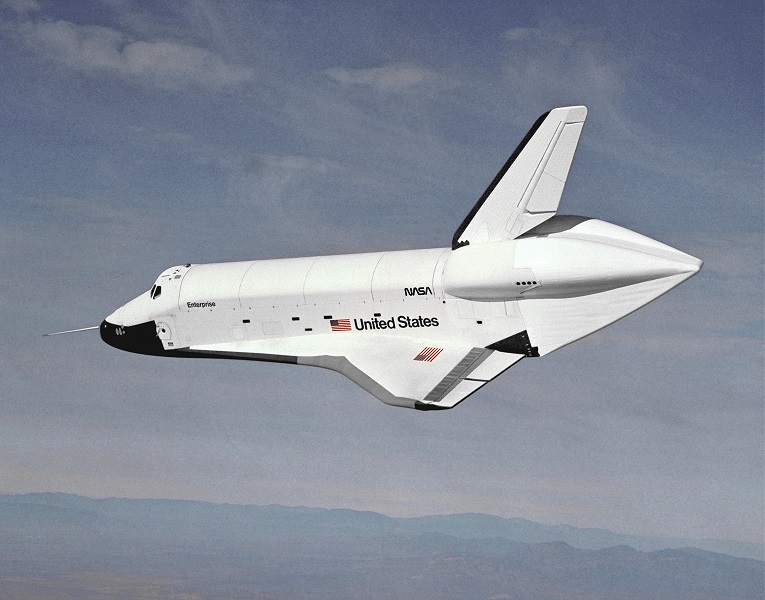 There are now lots of products out there claiming to be professional contribution decoders. A simple search for “SRT decoder” on Amazon brings up many results. Many entry-level newsgathering decoders are now being used in place of professional receivers. So, what’s the difference between these products and actual professional receivers such as ours?
There are now lots of products out there claiming to be professional contribution decoders. A simple search for “SRT decoder” on Amazon brings up many results. Many entry-level newsgathering decoders are now being used in place of professional receivers. So, what’s the difference between these products and actual professional receivers such as ours?
The simple answer is that a professional decoder has a datasheet showing all the differences, with advanced features such as ancillary data. But what about workflows that just need audio and video? What characteristics do professional decoders have that *aren’t* expressed on the datasheet. This blog post will explore two of these characteristics that are important in a professional environment:
SRT Decoder – What We Mean
The term “SRT decoder” is a a misnomer. SRT is an internet transport protocol, but in reality it is the compressed MPEG TS inside the SRT protocol that is being decoded.
There are two things about “SRT decoders” that need to be better understood in our industry. The first is that many decoders cannot tolerate changes to the input stream. The second is that many have limitations based on the payload (i.e. the actual data) being transported by SRT – as discussed in a previous article. This is often the case with newsgathering decoders, where they are designed to decode streams from the corresponding encoder vendor.
What this means is that you have to be very careful when choosing your “SRT decoder,” as you could easily end up with one that is incapable of decoding a wide range of streams.
So, what should you be looking for? Here are two examples of what professional receivers, such as our C100/C200, are capable of (we might cover a few more topics in future articles).
1) Tolerance of changes to the input
In normal video operations, a remote encoder can be stopped and started from time to time. For example, additional audio tracks for new languages can be added at the last minute. This causes what is known as a transport stream discontinuity. Some decoders will need manual intervention to recover – and often the encoder vendor is blamed for this. A professional decoder, on the other hand, can tolerate these changes to the input.
It’s important to bear in mind that professional video contribution is a dynamic environment. Changes are made last minute, there are glitches, there are switches in the input and a receiver needs to tolerate this. There can be dozens of receivers at third-party sites during a sporting event and it can be time consuming to ask third-parties to make manual interventions in case of issues.
2) Support for the Full Range of Compression Features (including bitrates)
A newsgathering receiver may claim to handle a specific bitrate (say, 15 Mbps), but this capability is often limited to their own equipment and does not account for the full range of compression features available in the industry (e.g CABAC vs CAVLC). For instance, while a newsgathering receiver may successfully decode a 15 Mbps stream from its corresponding encoder, this does not guarantee that it can handle the same bitrate when using the full range of features available in a given codec that professional encoders might use.
A professional receiver such as our C100/C200 will have been tested with the full range of compression features – not just those supported by a specific vendor’s encoder. This ensures that you can rely on the receiver to decode streams from multiple sources without running into issues related to bitrate or codec compatibility.
Real-world challenges
 In this picture, taken minutes before kick-off, a third-party newsgathering decoder has an issue. This is because either that vendor is not tolerant to a source change (discontinuity), or the decoder has an overloaded CPU that is not able to process both SRT processing and video decoding at the same time (because it has not been tested with the full range of compression features). Yet the user interface suggests a problem with either the network or the source – neither of which is true. The source has of course been verified with a professional analyser such as Dektec StreamXpert or Tektronix MTM400.
In this picture, taken minutes before kick-off, a third-party newsgathering decoder has an issue. This is because either that vendor is not tolerant to a source change (discontinuity), or the decoder has an overloaded CPU that is not able to process both SRT processing and video decoding at the same time (because it has not been tested with the full range of compression features). Yet the user interface suggests a problem with either the network or the source – neither of which is true. The source has of course been verified with a professional analyser such as Dektec StreamXpert or Tektronix MTM400.
Low-end receivers such as newsgathering receivers might proudly exhibit their SRT logo. But in reality they are unable to handle changes in the SRT payload. There can often be dozens of third-party decoders involved at a sporting event. Problematic decoders, like the one above can cause unnecessary panic and blame-games, minutes before an event starts. Often the bitrate needs to be lowered to support these devices, reducing picture quality for all takers, and perpetuating problems further as lowering the bitrate causes a discontinuity.
Testing
Professional vendors test their decoders thoroughly. It’s not enough to simply test a decoder running in a steady-state. As discussed, the world of contribution is a messy place, and careful testing is needed to make sure decoders can tolerate stream changes and the wide range of encoder features.
Unfortunately in real sports transmissions content takers are often added at the last minute, making it challenging to conduct comprehensive tests.
That is why broadcasters must choose vendors that conduct extensive testing across a wide range of scenarios. A professional receiver, such as our C100/C200 is built to accommodate these dynamic environments, ensuring that broadcasters can deliver high-quality content without interruptions or technical issues. Where possible, decoders should be tested and whitelisted/blacklisted to avoid operational issues.
To achieve this, professional measurement equipment, such as Dektec StreamXpert or Tektronix MTM400 need to be used to confirm signal integrity at source. Otherwise, misleading graphs like the one above suggest problems with the source where there are not.
Conclusions
While we’ve highlighted two key issues – tolerance to stream discontinuities and the importance of comprehensive testing—there are many more factors to consider when assessing your decoder. By prioritising thorough testing and working with reputable vendors, you can ensure that your broadcasting setup is robust, flexible, and ready to handle the complexities of live content delivery.
Learn more about our low-latency encoders and decoders.

